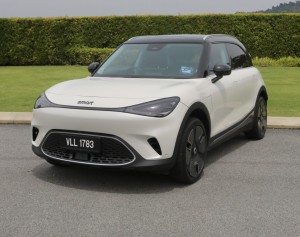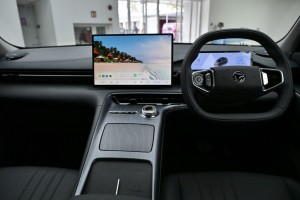PETALING JAYA: The tyre and textile industries are among the major contributors of microplastics in the environment, says an academic.
Universiti Sains Malaysia’s Applied Microbiology Professor Dr K. Sudesh Kumar said most of our clothes contain polyester, which is a type of plastic.
“Every time we wash our clothes, large quantities of microfibres are released from the clothes.
“These microfibres then break down to microplastics,” he said.
He said the erosion of tyres also generates microplastics because synthetic rubber is difficult to be biodegraded.
“Cosmetics and personal care industries use plastic microbeads for scrubbing effects and in various cosmetics formulations.”
He said industries related to the production of single-use plastics also contribute to microplastics, aside from the paint industry, as well as slow-release fertilisers that are coated with porous plastics material.
He said proper collection, segregation and treatment of waste plastic materials is important to minimise the creation of microplastics in the environment.
“Minimise the usage of single-use plastics. Use natural, biodegradable plastics,” he added.
READ MORE:
Tyre maker ENSO honoured for tackling electric car pollution
Tyre-makers under pressure as too much rubber hits the road
When driving, tyres emit pollution, and EVs make the problem worse
Study shows untreated used motor oil as among leading causes of hazards in rivers, posing cancer risk
Meanwhile, Sahabat Alam Malaysia (SAM) senior research officer Mageswari Sangaralingam said the results of cellular and animal experiments have shown that microplastics can affect the human body, including the digestive, respiratory, endocrine, reproductive and immune systems.
She said microplastics can also cause chemical toxicity, which involves the absorption and accumulation of environmental toxins, such as heavy metals and polycyclic aromatic hydrocarbons.
Mageswari said that microplastics in the respiratory system could cause oxidative stress in the airways and lungs when inhaled, leading to respiratory symptoms.
“These include coughing, sneezing and shortness of breath due to inflammation and damage, as well as fatigue and dizziness due to low blood oxygen concentration,” she said.
Mageswari said to reduce microplastic in the environment, single-use plastic products should be avoided.

“We cannot recycle our way out of the plastic pollution crisis because plastic recycling facilities are also a source of microplastic pollution since part of the recycling process creates microplastic particles.”
She said there is a need to ban primary microplastics and intentionally-added microplastics in products.
“Support measures to reduce the unintentional release of microplastics in the environment should be available.
“Consumers should also avoid products with microbeads, such as certain toothpaste and exfoliating scrubs,” she added.
Unicef Malaysia Climate and Environment officer Jasmin Irisha Jim Ilham said the organisation supports the revision of modules under Iskandar Malaysia Ecolife Challenge (IMELC).
She said this to create awareness of low carbon society (LCS) among students, teachers and communities.
“For 2024, IMELC is introducing a new module on Combat Plastic Pollution, to be piloted in 40 primary schools in Johor.
“Currently, a total of 80 teachers in Johor are attending a bootcamp to learn more on the hazardous effect of microplastics as well as biodiversity and turtle conservation, and appointing zero-single-use plastic champions,” she added.












